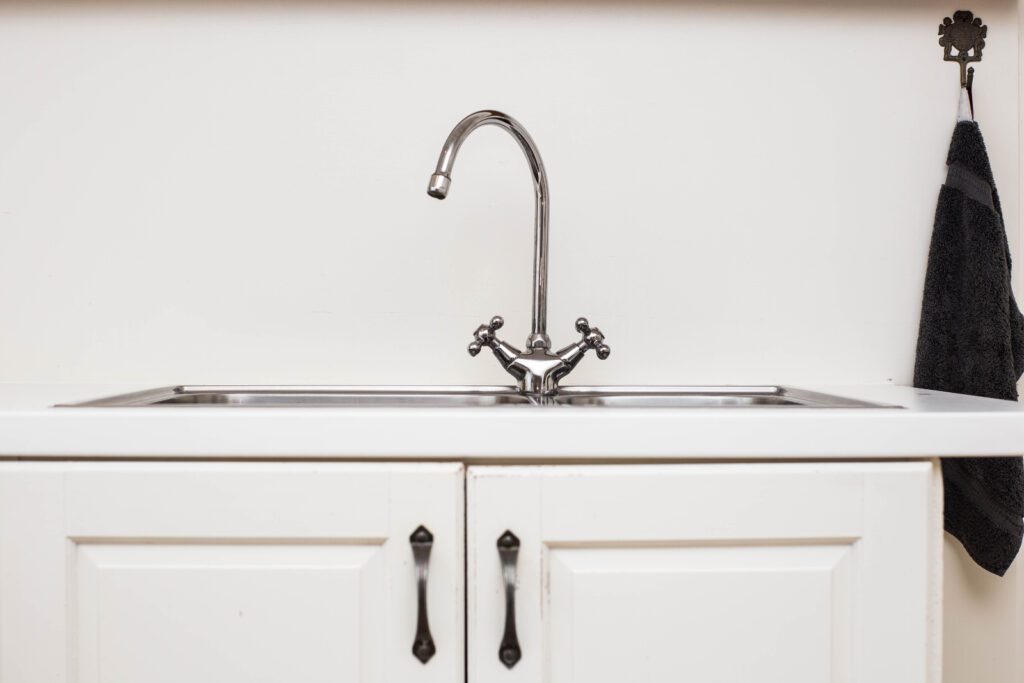The cold winter months are upon us, and they bring with them a variety of challenges for homeowners. From dealing with icy sidewalks and driveways to ensuring that your home’s pipes don’t freeze or eventually burst. Knowing how to take care of pipes in the winter is an important step in protecting your home.
Frozen pipes can lead to a myriad of issues, many of which you may not even notice until a few months later. As you know, when water freezes, it expands. As it expands, it could loosen plumbing joints or cause slight fissures in the pipes themselves. This could lead to slow unnoticeable leaks once the water thaws and cause a lot of unseen damage.
How to take care of pipes in winter
There are steps you can take on both the interior and exterior of your home to prevent frozen plumbing. It may seem like a lot of work, but your plumbing will thank you for it:
- Let the faucet drip
- Open cabinet doors to allow heat to circulate around pipes
- Wrap pipes in insulation
- Add heat tape or thermostat-controlled heat cables
- Keep your home’s temperature at a consistent level throughout winter
- Seal any cracks or holes in the foundation or walls that could let cold air in
- Make sure outdoor pipes are properly insulated
- Remove garden hoses from outdoor faucets
- Shut off the water supply and drain your irrigation system before winter arrives
Let the faucet drip
There are two reasons to keep the water moving once the temperatures dip below freezing for a few days in a row. Running water (even a trickle of water) won’t freeze as fast as standing water, so keeping at least a little water on the move will slow the process down. Keeping the faucet open also relieves the pressure that could be building in the pipes if the water does freeze, too.
Open cabinet doors to allow heat to circulate around pipes
This is especially true for any plumbing that is on an exterior wall, such as a kitchen or bathroom sink. The ambient warm air of the interior of the home should be enough to keep your pipes from freezing. If you plan on leaving for a few days, make sure to leave the home at least 55 degrees or warmer.
Wrap pipes in insulation
Make sure you properly insulate any exposed pipe sections near unheated areas like attics or basements. This will help prevent pipes from freezing to a point and is a relatively easy job for most homeowners to do. Just be sure to follow the manufacturer’s directions when using pipe insulation tape, tubes, or foam sleeves.
Make sure to wrap both hot and cold water pipes, too. The water is only kept hot when inside the water heater–water left behind in the pipes can freeze just as easily.
Add heat tape or heat cables
Although heat tape and heat cables are used more often in climates where the temperatures remain below freezing for weeks at a time, they can add an extra layer of protection here. Basically, you plug the “tape” or cables into a GFCI outlet and then follow the instructions to wrap the exposed section of pipes in the crawl space, basement, attic, or other uninsulated pipes.
For the most part, heat tape and cables with thermostats are self-regulating. When the temps get to a certain temperature, they apply heat to prevent frozen pipes. When temps warm up, they shut down to improve efficiency. While this may seem like an extreme measure in our neck of the woods, we do experience prolonged bouts of freezing temps from time to time.
Keep your home a consistent temperature
As we said earlier, keeping your home at a consistent, comfortable temperature will help prevent pipes from freezing. The general consensus is your home should be kept above 55 degrees to protect your interior water pipes from freezing temps that could come creeping in from the outside.
Seal any cracks or holes in the foundation or walls
Another way to prevent uninsulated areas from freezing is to prevent as much cold air from entering as possible. Take a look at your unfinished basement to see if there are any cracks or holes that can be filled to stop cold air from entering (or letting warmer air escape). It’s still going to be cold, but it will help keep things above freezing.
Insulate outdoor pipes
If you must keep outdoor pipes in use during the winter, make sure they are properly insulated if they are exposed. Buried lines are usually at a required depth to prevent freezing, but if they are accessible, they need to be insulated.
Remove garden hoses and insulate hose bibs
Turn off all outdoor hose bibs, remove garden hoses, and attach a bib cover. Any water left behind in the hose could freeze, expand, and cause leaks. The ice could also expand into the spigot itself, causing damage there too. Hose bibs also provide a nice entry point for freezing temperatures, so do what you can to keep them insulated.
Shut off the water supply and drain your irrigation system before winter arrives
If you have a sprinkler system, chances are you won’t be using them in the dead of winter. Make sure to drain those lines once the fall rains arrive so you don’t forget when freezing temps arrive. You don’t want to turn on your sprinklers in the spring only to discover low-pressure caused by leaks in the system.
If you do discover frozen pipes are preventing your normal water pressure or have completely stopped the flow of water, never use an open flame to try to thaw the pipes. For one, you could burn the house down! And rapid thawing could actually increase the chances of burst pipes. Use gradual heat, like from a space heater or hair dryer to thaw the pipes you can access.
In winter, pipes are particularly susceptible to freezing and bursting. Taking care of your pipes before the cold weather arrives is an important part of home maintenance, both on the inside of your home and on any exterior plumbing. If you lose water pressure or get no water at all during a cold snap, don’t hesitate to give Simpson Plumbing a call.


 About Us
About Us  Services
Services  Plans
Plans  Commercial
Commercial